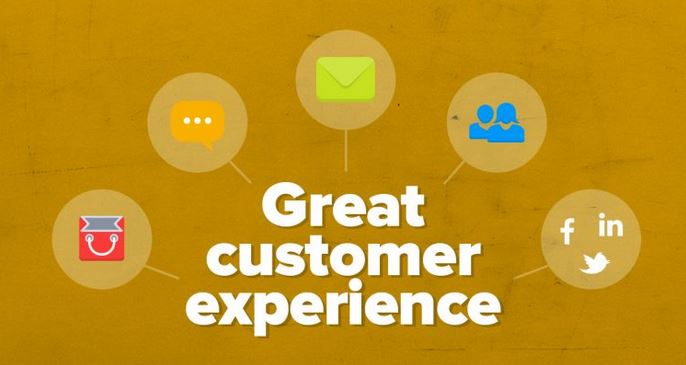
-
05 May
-
7 Ways to Create a Great Customer Experience Strategy
Let’s take a look at seven ways to create a great customer experience strategy to help you improve customer satisfaction, reduce churn and increase revenues.
1. Create a clear customer experience vision
The first step in your customer experience strategy is to have a clear customer-focused vision that you can communicate with your organization. The easiest way to define this vision is to create a set of statements that act as guiding principles.
For example, Zappos use their Zappos core family values and these values are embedded into their culture; which includes delivering wow through service, be humble and embracing change.
Once these principles are in place, they will drive the behavior of your organization. Every member of your team should know these principles by heart and they should be embedded into all areas of training and development.
2. Understand who your customers are
The next step in building upon these customer experience principles is to bring to life the different type of customers who deal with your customer support teams. If your organization is going to really understand customer needs and wants, then they need to be able to connect and empathize with the situations that your customers face.
One way to do this is to create customer personas and give each persona a name and personality. For example, Anne is 35 years old; she likes new technology and is tech savvy enough to follow a video tutorial on her own, whereas John (42 years old) needs to be able to follow clear instructions on a web page.
By creating personas, your customer support team can recognize who they are and understand them better. It’s also an important step in becoming truly customer centric.
3. Create an emotional connection with your customers
You’ve heard the phrase “it’s not what you say; it’s how you say it”?
Well, the best customer experiences are achieved when a member of your team creates an emotional connection with a customer.
One of the best examples of creating an emotional connection comes from Zappos, when a customer was late on returning a pair of shoes due to her mother passing away. When Zappos found out what happened, they took care of the return shipping and had a courier pick up the shoes without cost. But, Zappos didn’t stop there. The next day, the customer arrived home to a bouquet of flowers with a note from the Zappos customer service team who sent their condolences.
Research by the Journal of Consumer Research has found that more than 50% of an experience is based on an emotion as emotions shape the attitudes that drive decisions.
Customers become loyal because they are emotionally attached and they remember how they feel when they use a product or service. A business that optimizes for an emotional connection outperforms competitors by 85% in sales growth.
And, according to a recent Harvard Business Review study titled “The New Science of Customer Emotions“, emotionally engaged customers are:
- At least three times more likely to recommend your product or service
- Three times more likely to re-purchase
- Less likely to shop around (44% said they rarely or never shop around)
- Much less price sensitive (33% said they would need a discount of over 20% before they would defect).
4. Capture customer feedback in real time
How can you tell if you are delivering a wow customer experience?
You need to ask – And ideally you do this by capturing feedback in real time.
Send a follow up email to every customer using post-interaction surveys and similar customer experience tools to automate the process.
Of course, it’s possible to make outbound calls to customers in order to gain more insightful feedback.
It’s also important to tie customer feedback to a specific customer support agent, which shows every team member the difference they are making to the business.
5. Use a quality framework for development of your team
By following the steps above, you now know what customers think about the quality of your service compared to the customer experience principles you have defined. The next step is to identify the training needs for each individual member of your customer support team.
Many organizations assess the quality of phone and email communication, however, a quality framework takes this assessment one step further by scheduling and tracking your teams development through coaching, eLearning and group training.
6. Act upon regular employee feedback
Most organizations have an annual survey process where they capture the overall feedback of your team; how engaged they are and the businesses ability to deliver an exceptional service.
But, what happens in the 11 months between these survey periods?
Usually, nothing happens. And this is where continuous employee feedback can play a role using tools that allow staff to share ideas on how to improve the customer experience and for managers to see how staff is feeling towards the business.
For example, using project management software or social media tools, you can create a closed environment where your organization can leave continuous feedback.
7. Measure the ROI from delivering great customer experience
And finally, how do you know if all this investment in your teams, process and technology are working and paying off?
The answer is in the business results.
Source by: https://www.superoffice.com/blog/customer-experience-strategy/
- 05 May, 2019
- 168Solution Public Class
